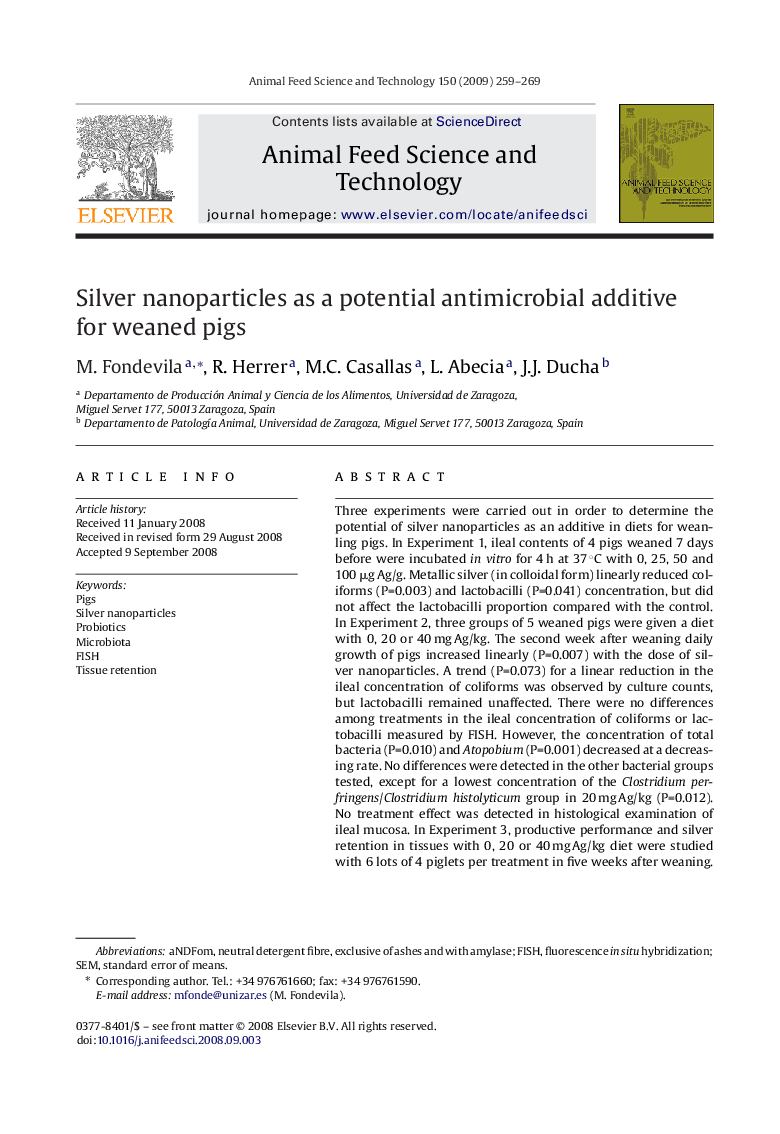| Article ID | Journal | Published Year | Pages | File Type |
|---|---|---|---|---|
| 2420350 | Animal Feed Science and Technology | 2009 | 11 Pages |
Three experiments were carried out in order to determine the potential of silver nanoparticles as an additive in diets for weanling pigs. In Experiment 1, ileal contents of 4 pigs weaned 7 days before were incubated in vitro for 4 h at 37 °C with 0, 25, 50 and 100 μg Ag/g. Metallic silver (in colloidal form) linearly reduced coliforms (P=0.003) and lactobacilli (P=0.041) concentration, but did not affect the lactobacilli proportion compared with the control. In Experiment 2, three groups of 5 weaned pigs were given a diet with 0, 20 or 40 mg Ag/kg. The second week after weaning daily growth of pigs increased linearly (P=0.007) with the dose of silver nanoparticles. A trend (P=0.073) for a linear reduction in the ileal concentration of coliforms was observed by culture counts, but lactobacilli remained unaffected. There were no differences among treatments in the ileal concentration of coliforms or lactobacilli measured by FISH. However, the concentration of total bacteria (P=0.010) and Atopobium (P=0.001) decreased at a decreasing rate. No differences were detected in the other bacterial groups tested, except for a lowest concentration of the Clostridiumperfringens/Clostridiumhistolyticum group in 20 mg Ag/kg (P=0.012). No treatment effect was detected in histological examination of ileal mucosa. In Experiment 3, productive performance and silver retention in tissues with 0, 20 or 40 mg Ag/kg diet were studied with 6 lots of 4 piglets per treatment in five weeks after weaning. Feed intake was highest in treatment with 20 mg Ag/kg (P<0.05). No effect was observed on apparent digestibility coefficients. After 5 weeks, there was no silver retention in skeletal muscles or kidneys, but it was observed, although in minimal proportions, in liver (1.354 and 2.445 μg Ag/g dry liver for 20 and 40 mg Ag/kg). The potential effect of metallic silver as a dietary additive on intake and growth of weaned piglets could be mediated through its antimicrobial properties, either against certain bacterial groups or reducing the microbial load of the small intestine; however, other beneficial effects over the host metabolism cannot be discarded.
